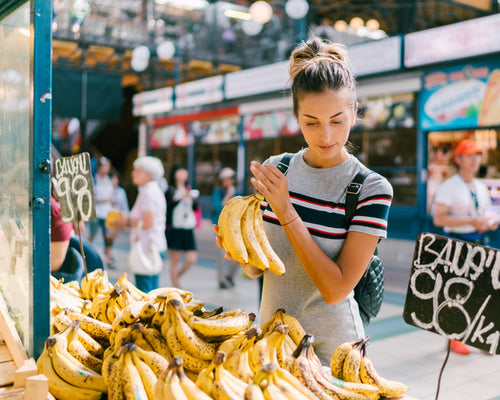“An apple a day keeps the doctor away,” but the same can be said for bananas. The tropical fruit contains plenty of nutrients and can be beneficial to health in a number of ways.
Banana Health Benefits
They’re nutrient-rich. Bananas contain fiber, potassium, magnesium, Vitamin B6, and Vitamin C, among other nutrients. They also contain free radical-fighting antioxidants. One banana contains a little over 100 calories.
This fruit has been getting a lot of flak, with some people saying that it leads to weight gain. However, there have been no conclusive studies linking bananas to weight gain. It’s also been reported that today’s bananas, which have been bred to become sweeter, contain too much sugar. As with everything, the key is moderation. One banana a day should be plenty, and you should consume it as part of a healthy diet that makes room for the recommended five servings of fruits and vegetables a day.
They’re good for your digestion. Bananas contain fiber, which help you maintain a healthy bowel movement. If you’re having tummy troubles (particularly diarrhea and vomiting), then bananas are safe to include in your diet. The potassium in bananas can help replenish lost electrolytes. And the resistant starch in unripe bananas may be feed the good bacteria in your gut. Additionally, it may be able to help prevent and treat digestive disorders like ulcerative colitis and Crohn’s disease, according to the Harvard T.H. Chan School of Public Health.
They’re great for athletes. It’s not unusual to see tennis players snacking on a banana in between sets. The potassium in bananas help replenish lost electrolytes during grueling sporting events, possibly helping keep muscle cramps at bay.
A study published in the journal PLoS ONE found that bananas were as beneficial as sports drinks when consumed during intense cycling. Bananas had the added benefit of providing antioxidants and nutrients that aren’t found in sports drinks, and contain healthier sugars than those in commercially produced drinks.
They may be good for heart health. The Harvard T.H. Chan School of Public Health explains that too much sodium in the body can cause a buildup of fluid in the blood, placing pressure on the walls of blood vessels and leading to high blood pressure. Potassium can help balance this out, nudging the body to flush out excess sodium. The magnesium in bananas is likewise good for heart health.
Types of Bananas
The Philippines is a top exporter of bananas. While the cavendish banana is popular overseas, we have a number of local cultivars, with different appearances and flavor profiles.
Lakatan banana. This type of banana is perhaps the most common, found in check-out counters of convenience stores and office cafeterias. Once you remove the yellow peel, you’ll find a yellow-orange fruit. (This color is normally associated with a high Vitamin A content.) It’s a very sweet type of banana and can be eaten on its own or mixed into a smoothie.
Latundan banana. Another common cultivar, the latundan has a paler peel than the lakatan, and also a paler, white-ish fruit. It’s not as sweet as the lakatan and has a bit of a tangy flavor.
Saba banana. This fat cultivar has a somewhat dull appearance, with a yellow peel that isn’t quite as vibrant as other types. The saba is widely used in Filipino cooking, with the puso ng saging used in savory dishes and the ripe fruit used in desserts like minatamis na saging. It can be eaten raw when it’s ripe but the saba truly shines when it’s cooked.
Bulkan banana, Not a popular cultivar, the bulkan banana may be the same as or is very similar to the lagkitan, a sweet, rounded banana that may have some seeds.
Going Bananas
Bananas are a perfect grab-and-go food as they come with their own carrying case (the protective banana peel). There are also so many ways to incorporate them into your diet, whether you eat them on their own or as part of a savory dish.
For breakfast, you can blend a lakatan banana into a smoothie. Throw in some other fruits like berries to supercharge your drink. For a main meal, you can include saba bananas in dishes like arroz a la cubana or pochero. And for a snack, try to avoid Filipino snacks like bananacue and turon, which have a lot of added sugar and are deep-fried in oil. Instead, eat a banana (go for a latundan banana if you want something that isn’t so sweet) as is or with some natural peanut butter.
sources:
https://www.pepper.ph/go-bananas-11-varieties-worth-seeking-philippines/
https://www.healthline.com/nutrition/11-proven-benefits-of-bananas
https://www.sciencedaily.com/releases/2012/05/120529113258.htm
https://www.hsph.harvard.edu/nutritionsource/food-features/bananas/





